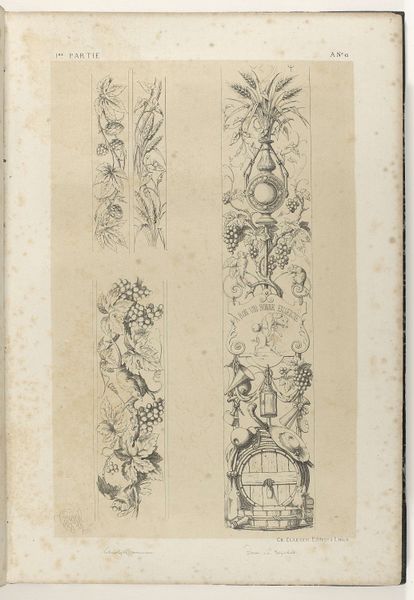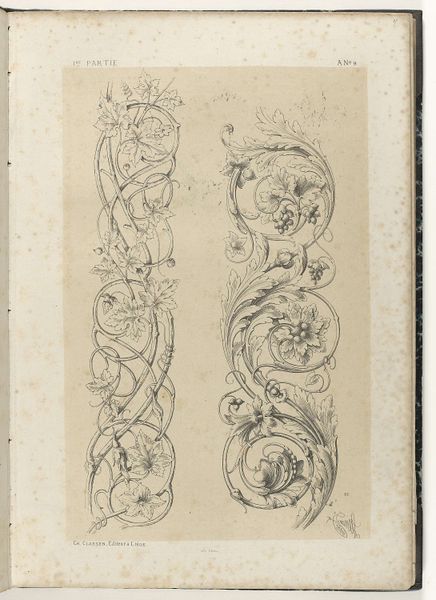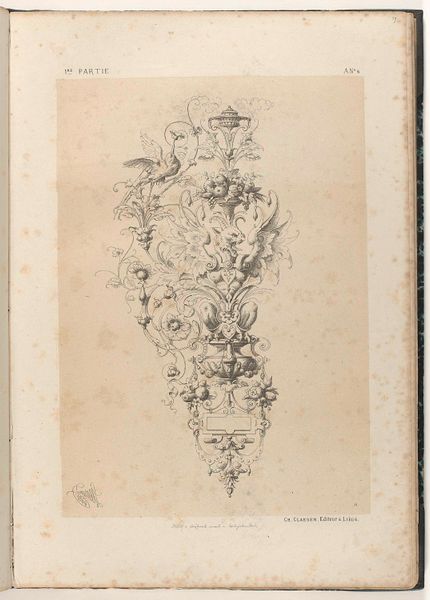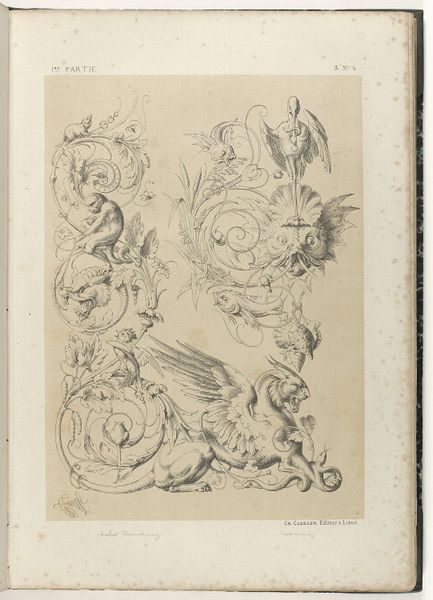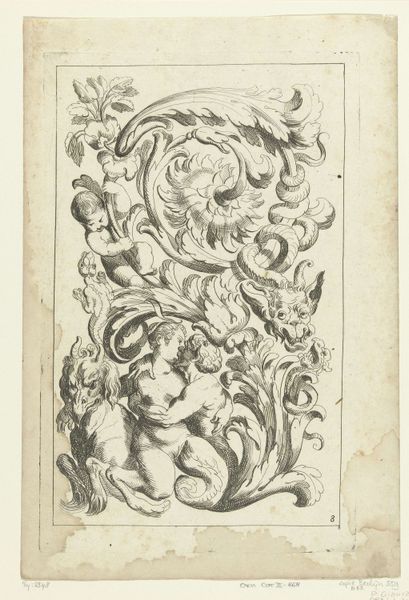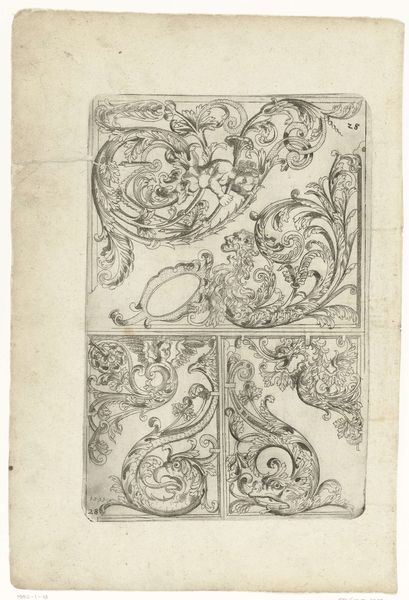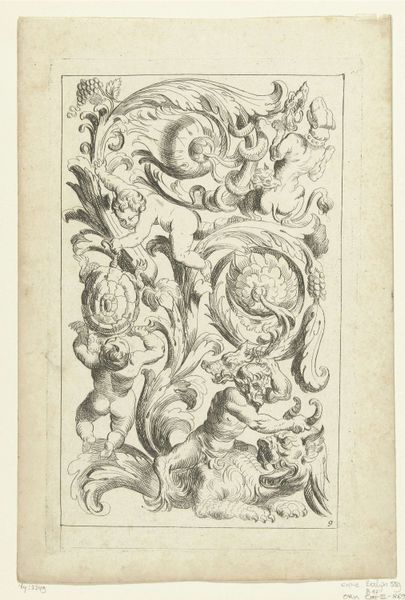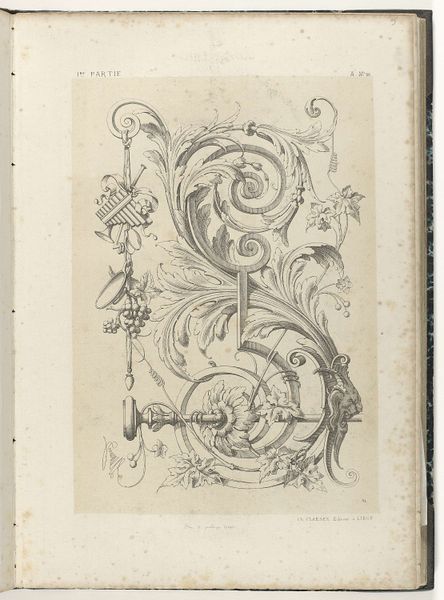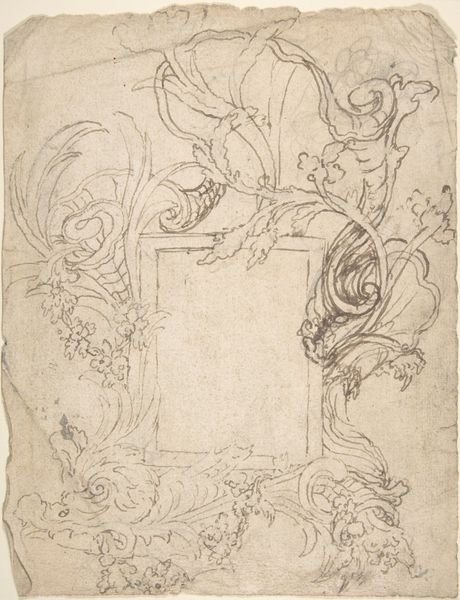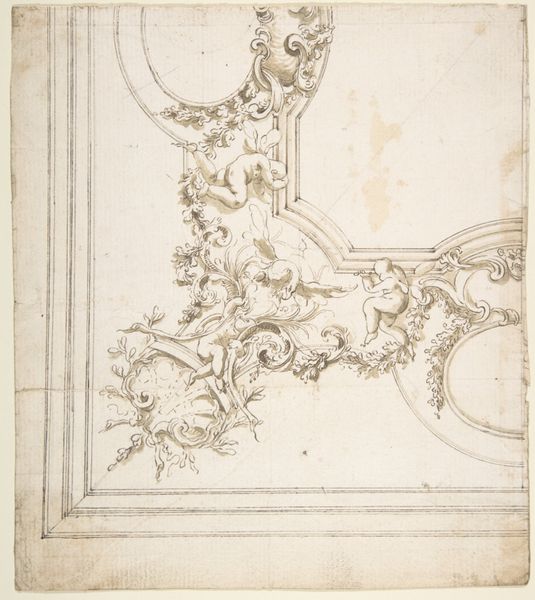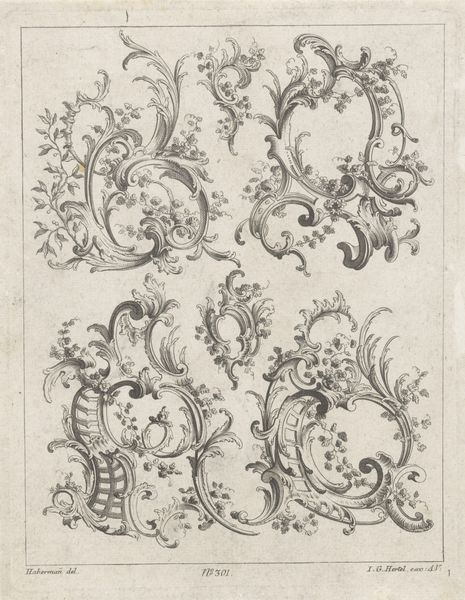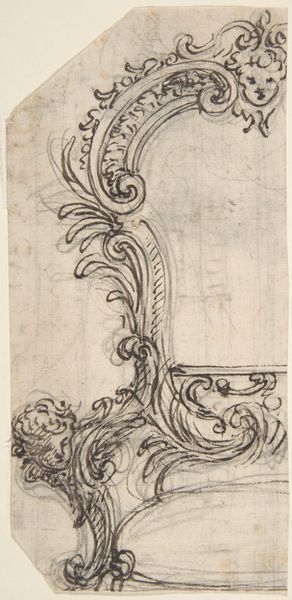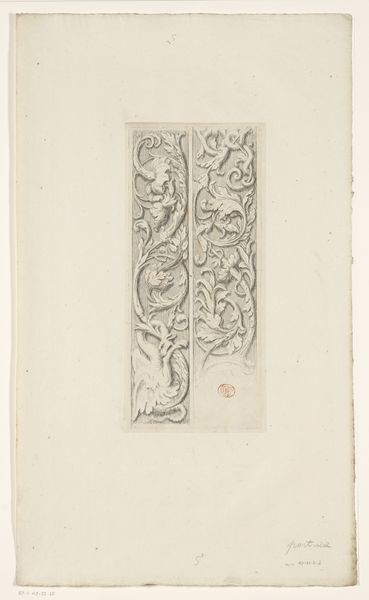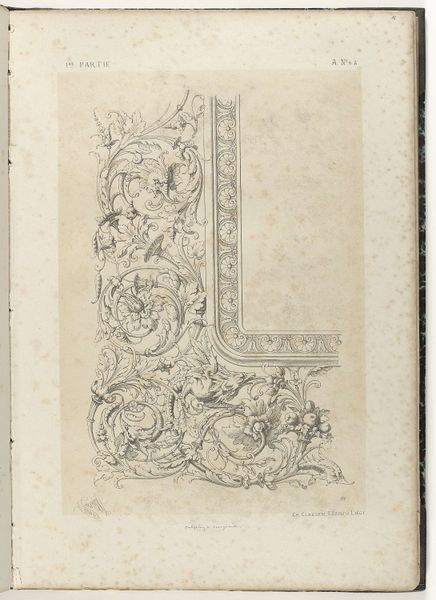
Dimensions: height 418 mm, width 290 mm
Copyright: Rijks Museum: Open Domain
Curator: These are two pen and ink studies of climbing foliage. The artwork, "Twee motieven van bladranken", which translates to "Two motifs of leaf tendrils," was created by Michel Liénard in 1866. What do you make of it? Editor: They're decorative, linear. It looks like they're designs for something else… almost like templates. There is clearly a separation between what may be natural on the left and stylized on the right. I notice the level of detail as well, they each vary from light sketched lines to darker bolder lines. Curator: Liénard's works were rooted in the decorative arts, deeply informed by the rising tide of Art Nouveau, although here we see that impulse early. Notice the natural forms that almost want to break free of their outlines, reaching to express an internal vital energy. This artwork reveals the symbolism of rebirth and growth connected with nature. Editor: But considering its creation in the 19th century, isn’t it interesting how divorced from nature the work appears? These look like designs for industrially-produced objects; perhaps wallpaper, or maybe cast iron railings? They lack the inherent messiness of real growth, the untamed vitality you just mentioned, that only suggests commercial fabrication. Curator: Absolutely. Even in these studies, the inherent tension between natural and stylized forms serves as a reminder of our longing for something fundamentally human, especially within an increasingly industrial age. Editor: So the artist takes these natural forms – vines, leaves – and translates them through the filter of material possibility. Look how meticulously each tendril is rendered, clearly intending this to be reproduced. Even his choice of simple pen and ink supports efficient reproduction. Curator: Yes. Liénard transforms foliage into symbols of vitality in a period of rapid industrialization and technological change, hinting towards a nostalgic and enduring symbolic dialogue within visual culture. Editor: Fascinating to consider the artistic hand and intention translated through the cold potential of mass production. Curator: Indeed, a constant cycle of influence.
Comments
No comments
Be the first to comment and join the conversation on the ultimate creative platform.
